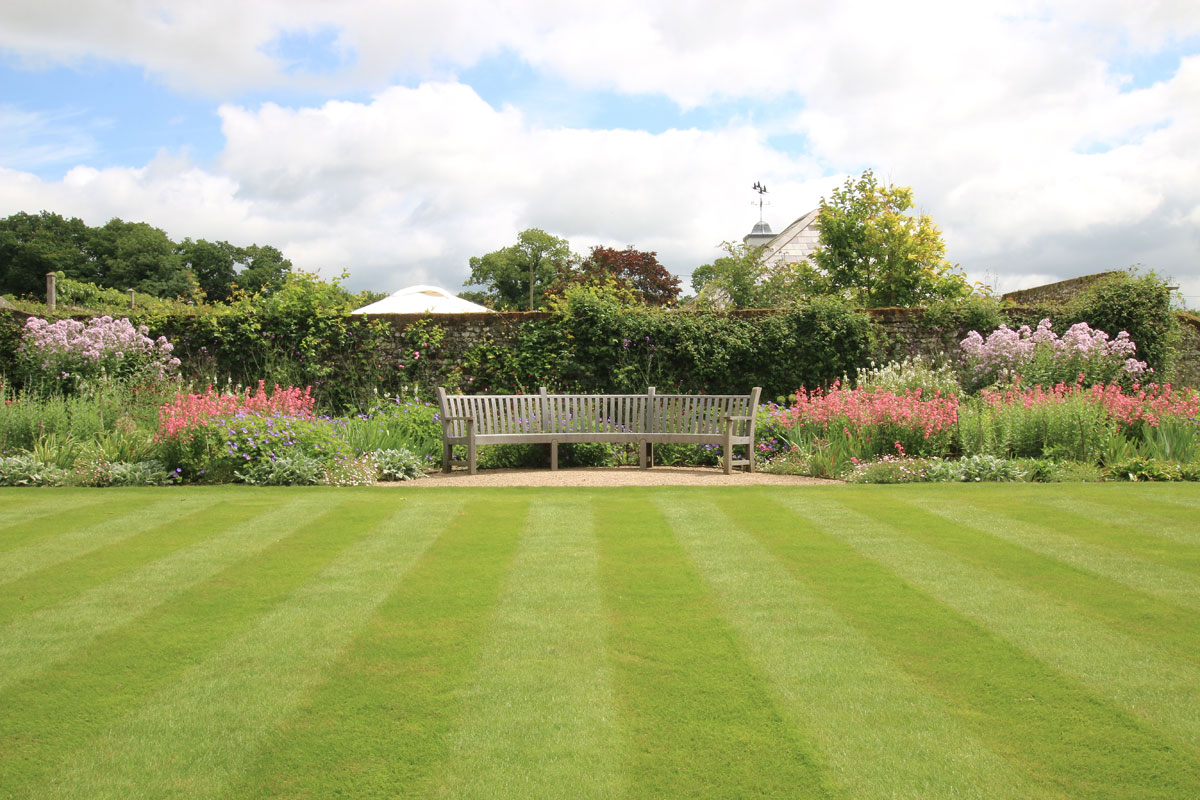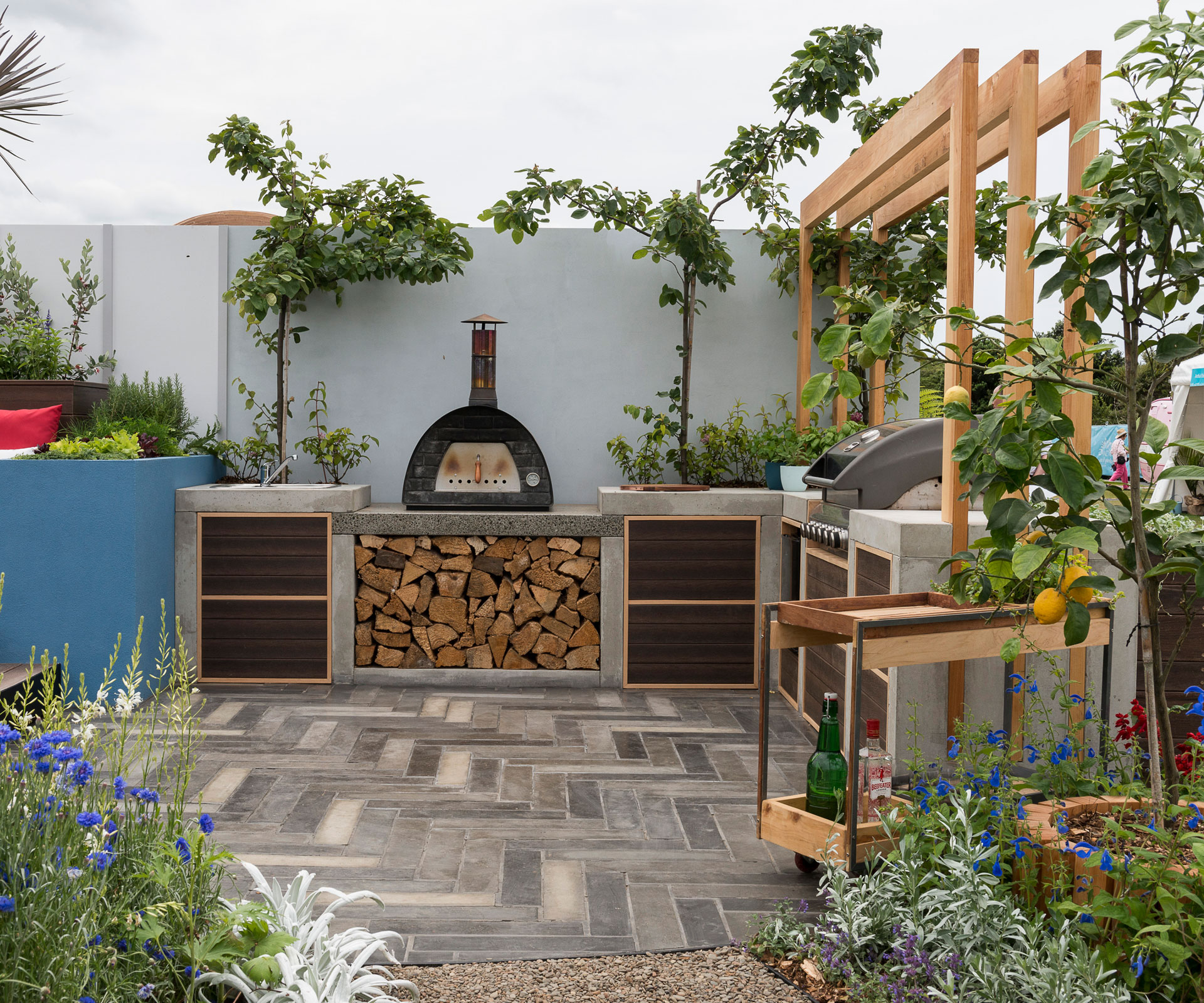Sustainable Gardening Practices

As environmental concerns rise, sustainable gardening practices are becoming increasingly important. These practices not only benefit the environment but also contribute to a healthier and more resilient garden ecosystem.
Water-Wise Landscaping
Water conservation is a crucial aspect of sustainable gardening. Implementing water-wise landscaping strategies can significantly reduce water consumption while maintaining a lush and vibrant garden.
- Choosing drought-tolerant plants: Selecting native plants or those adapted to the local climate can reduce the need for frequent watering. These plants are naturally resilient and require minimal water to thrive. Examples include succulents, cacti, and certain types of grasses.
- Mulching: Applying a layer of mulch around plants helps retain soil moisture, reducing evaporation and the need for frequent watering. Organic mulches like wood chips, bark, or straw are particularly beneficial as they decompose and enrich the soil over time.
- Efficient irrigation systems: Drip irrigation systems deliver water directly to the roots of plants, minimizing water loss through evaporation. Installing a timer on the system can further optimize water usage by ensuring watering only when needed.
- Collecting rainwater: Rainwater harvesting systems collect rainwater from rooftops and store it in tanks for later use. This collected water can be used for watering plants, reducing reliance on municipal water supplies.
Native Plants
Using native plants in the garden offers numerous benefits for both the environment and the gardener. Native plants are well-adapted to the local climate and soil conditions, requiring less maintenance and resources.
- Biodiversity: Native plants provide food and shelter for local wildlife, supporting a healthy and balanced ecosystem. They attract pollinators such as bees and butterflies, contributing to the overall health of the garden and surrounding environment.
- Reduced maintenance: Native plants are generally more resistant to pests and diseases, requiring less intervention from the gardener. They are also adapted to the local climate, requiring less watering and fertilization, reducing the overall workload.
- Soil health: Native plants often have deep root systems that help improve soil structure and aeration. They also contribute to the soil's fertility by adding organic matter as they decompose.
Reducing Pesticide Use, Garden design trends for the future
Pesticides can have harmful effects on the environment, including water pollution, wildlife toxicity, and human health risks. Minimizing pesticide use is essential for creating a sustainable garden.
- Organic pest control: Implementing organic pest control methods, such as using beneficial insects, companion planting, and handpicking pests, can effectively manage pest populations without resorting to chemical pesticides. These methods promote a healthy ecosystem and reduce the risk of pesticide residues in the garden.
- Resistant plant varieties: Choosing plant varieties that are naturally resistant to common pests and diseases can significantly reduce the need for pesticides. Many nurseries and seed companies offer a wide selection of resistant varieties.
- Proper plant care: Providing plants with the appropriate growing conditions, including adequate sunlight, water, and nutrients, can strengthen their natural defenses against pests and diseases, reducing the need for pesticides.
Composting and Rainwater Harvesting
Composting and rainwater harvesting are effective ways to reduce waste and conserve resources in the garden.
- Composting: Composting organic waste, such as kitchen scraps and yard debris, creates a rich and nutrient-rich soil amendment. Compost can be used to improve soil structure, fertility, and water retention. It also reduces the amount of waste sent to landfills, promoting sustainability.
- Rainwater harvesting: Installing a rainwater harvesting system can collect rainwater from rooftops and store it in tanks for later use. This collected water can be used for watering plants, reducing reliance on municipal water supplies. Rainwater is naturally soft and free of chemicals, making it ideal for garden use.
Technology Integration: Garden Design Trends For The Future

The future of garden design is intertwined with technology, offering innovative solutions to enhance gardening experiences and address the challenges of a changing world. Smart garden technologies, vertical gardening, and augmented reality are transforming the way we cultivate and interact with our green spaces.
Smart Garden Technologies
Smart garden technologies are revolutionizing how we care for our plants. Sensors, automated irrigation systems, and connected devices provide real-time data and control, optimizing plant health and reducing water waste.
Sensors
Sensors monitor various environmental factors like soil moisture, temperature, and light levels. They send data to a central hub, alerting gardeners to potential issues and allowing for proactive adjustments. For example, a soil moisture sensor can trigger an automated irrigation system to water plants only when necessary, conserving water and ensuring optimal hydration.
Automated Irrigation Systems
Automated irrigation systems use sensors and timers to deliver precise amounts of water to plants based on their needs. These systems can be programmed to adjust watering schedules based on weather conditions and plant growth stages, minimizing water waste and ensuring efficient water delivery.
Vertical Gardening and Hydroponics
Urban environments face challenges like limited space and soil degradation. Vertical gardening and hydroponics offer innovative solutions for growing food and greenery in these constrained settings.
Vertical Gardening
Vertical gardening utilizes walls, fences, and other vertical surfaces to create green spaces. It maximizes space utilization, allowing for greater plant density in small areas. Vertical gardens can be constructed using various materials like living walls, trellises, and hanging planters.
Hydroponics
Hydroponics is a method of growing plants without soil, using nutrient-rich water solutions. It allows for controlled environments, reducing the risk of pests and diseases. Hydroponic systems are suitable for growing a variety of plants, including vegetables, herbs, and flowers.
Gardening Apps and Online Resources
Gardening apps and online resources provide valuable information and tools for gardeners of all levels. They offer plant identification, care guides, and community forums, empowering gardeners to make informed decisions and connect with other enthusiasts.
| Benefits | Drawbacks |
|---|---|
| Access to vast knowledge base | Potential for information overload |
| Personalized recommendations | Dependence on technology and internet access |
| Community support and interaction | Limited ability to address specific local conditions |
Augmented Reality in Garden Design
Augmented reality (AR) technology overlays digital information onto the real world, enhancing the garden design process. AR apps allow users to visualize plants and structures in their garden space before making any physical changes. This interactive experience facilitates informed decision-making and reduces the risk of design errors.
AR for Garden Design
AR apps can be used to:
* Visualize plant sizes and shapes in real-time.
* Experiment with different plant combinations and arrangements.
* Explore various hardscaping elements like paths, patios, and water features.
* Create a virtual 3D model of the garden, allowing for realistic visualization.
Food Production and Edible Gardens

The desire to grow one's own food is on the rise, driven by a growing awareness of food security, a yearning for fresh, locally-sourced produce, and a desire to connect with nature. Edible gardens offer a rewarding way to cultivate fresh food while adding beauty and ecological benefits to the landscape.
Designing a Productive and Aesthetically Pleasing Vegetable Garden
A well-designed vegetable garden maximizes space and productivity while maintaining an appealing aesthetic. Consider these tips for creating a thriving and visually pleasing edible haven:
- Plan your layout: A well-thought-out layout maximizes space and sun exposure. Consider the size and growth habits of your chosen vegetables.
- Choose the right plants: Select vegetables that thrive in your climate and soil type. Consider companion planting, where certain plants benefit each other's growth.
- Incorporate vertical gardening: Utilize trellises, raised beds, and vertical planters to create a multi-layered garden that maximizes space.
- Add visual interest: Include flowers, herbs, and decorative elements like stepping stones or small sculptures to enhance the aesthetic appeal.
- Maintain a tidy garden: Regular weeding, pruning, and mulching contribute to a healthy and attractive garden.
Incorporating Fruit Trees and Berry Bushes
Fruit trees and berry bushes offer a long-term investment in delicious and nutritious food, adding visual interest and ecological value to the landscape.
- Choose the right varieties: Select fruit trees and berry bushes that are well-suited to your climate and soil conditions.
- Consider space requirements: Ensure adequate space for mature trees and bushes.
- Plan for pollination: If you're planting fruit trees, consider planting different varieties for cross-pollination.
- Provide proper care: Fruit trees and berry bushes require regular watering, fertilization, and pruning.
Edible Flowers and Herbs
Edible flowers and herbs add a burst of flavor, color, and fragrance to the garden.
- Pansies and Violets: These vibrant flowers add a sweet, delicate flavor to salads and desserts.
- Nasturtiums: The peppery flowers and leaves add a tangy zest to salads and savory dishes.
- Lavender: This fragrant herb is known for its calming properties and adds a floral touch to desserts and teas.
- Chives: These delicate, onion-flavored herbs are perfect for adding a subtle savory note to dishes.
- Rosemary: This aromatic herb complements roasted meats and vegetables.
Minimalist and Modern Garden Design

Minimalist and modern garden design is gaining popularity as homeowners seek a clean, uncluttered, and visually appealing outdoor space. This style emphasizes simplicity, functionality, and a harmonious blend of natural and architectural elements.
Key Elements of Minimalist Garden Design
Minimalist garden design prioritizes a streamlined aesthetic, achieved through a careful selection of plants, materials, and structures. Here are some key elements:
- Clean Lines and Geometric Shapes: Instead of flowing curves, minimalist gardens feature straight lines, geometric shapes, and precise edges. This creates a sense of order and structure.
- Gravel Pathways: Gravel pathways are a popular choice in minimalist gardens, providing a natural, low-maintenance surface that complements the clean lines of the design.
- Structural Planting: Minimalist gardens often feature a limited selection of plants, carefully chosen for their texture, shape, and color. These plants are arranged in geometric patterns or as focal points to create visual interest.
- Minimalist Color Palette: The color palette in a minimalist garden is typically muted and subdued, using natural tones like gray, white, black, and green. This creates a sense of tranquility and sophistication.
Use of Modern Materials in Garden Structures
Modern materials like concrete, steel, and glass are often incorporated into minimalist garden structures.
- Concrete: Concrete is a durable and versatile material used for pathways, walls, and seating areas. It can be finished in various ways to create a sleek and modern look.
- Steel: Steel is another durable and modern material that can be used for structures like pergolas, fences, and garden art. Its sleek lines and minimal design complement the minimalist aesthetic.
- Glass: Glass can be incorporated into minimalist gardens to create a sense of openness and light. It can be used for walls, fences, and even water features.
Visual Representation of a Minimalist Garden Design
| Image Description | Details |
|---|---|
| A rectangular garden with a gravel pathway running through the center. The pathway is bordered by a low concrete wall. On either side of the pathway, there are geometrically shaped beds planted with low-growing grasses and succulents. A single, large, sculptural tree stands in the center of the garden, providing shade and a focal point. The garden is surrounded by a minimalist fence made of steel. | This image illustrates the key elements of minimalist garden design, including clean lines, geometric shapes, gravel pathways, structural planting, and modern materials. |
Essential FAQs
Garden design trends for the future - What are some popular sustainable gardening practices?
Popular sustainable practices include using native plants, composting, rainwater harvesting, and reducing pesticide use.
How can technology enhance my garden design?
Smart garden technologies like sensors, automated irrigation systems, and gardening apps can help you monitor and manage your garden more efficiently.
What are the benefits of creating a therapeutic garden?
Therapeutic gardens can promote relaxation, reduce stress, and improve mental and physical well-being.
What are some key elements of minimalist garden design?
Minimalist garden design often features clean lines, geometric shapes, gravel pathways, and structural planting.
